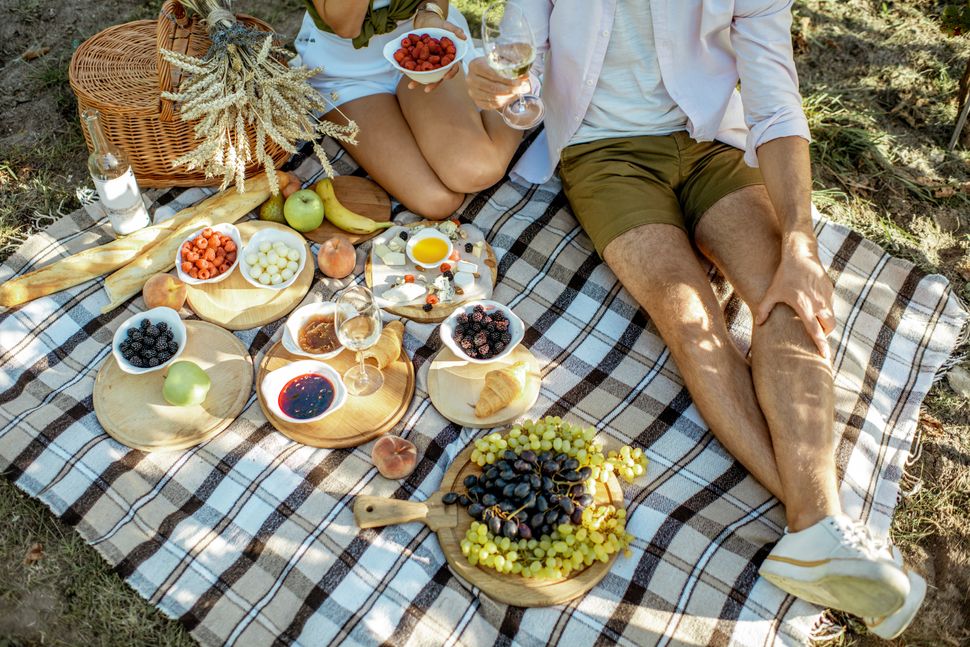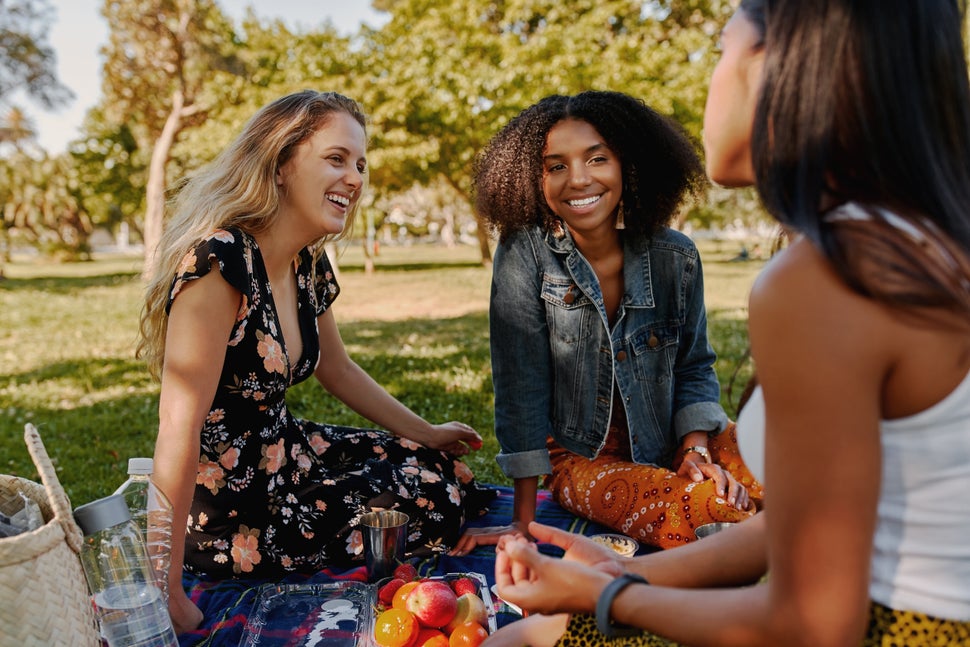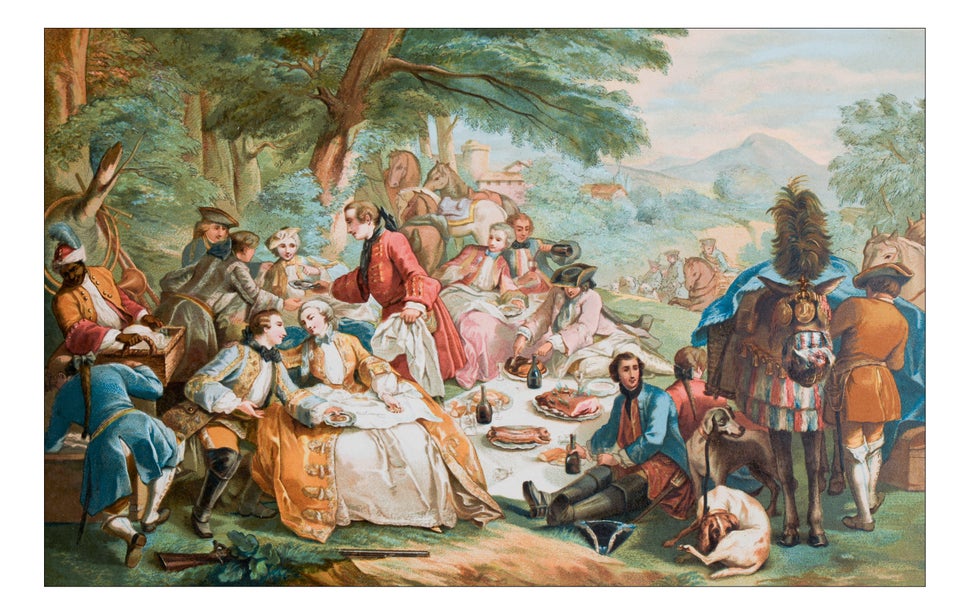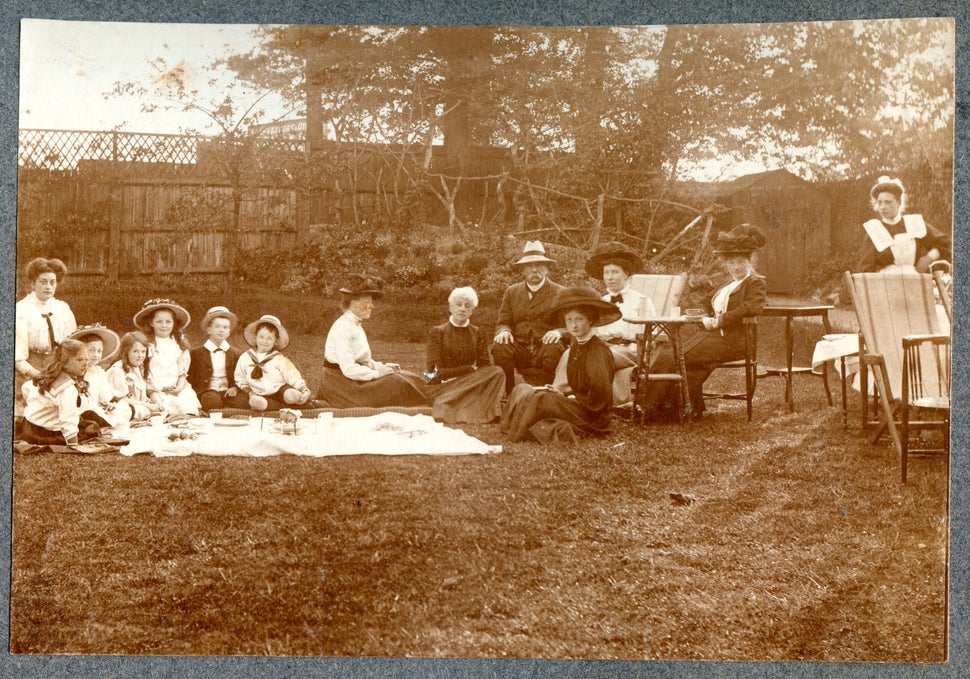You’re reading our series Summer’s Not Cancelled, where we celebrate summer in this new normal. From rediscovering nature and cherishing time with friends and family, to virtual festivals and unforgettable staycations – summer’s still here, it’s just different.
Like going camping, which has surged in popularity this summer, picnicking seems to have chimed with our lockdown lifestyle. Put simply, it’s one of the most pleasurable things we’ve been able to do, safely (insert sex joke here!).
But it goes deeper than that: picnicking feels anarchic at any point and certainly under a pandemic, because it breaks all of the typical rules of “proper” (read: formal/traditional/laborious) dining.
“There’s something about being outside that allows for something more relaxed to unfold,” reckons Polly Russell, food historian and the friendly face from BBC’s Back In Time For Dinner. “I do think that picnics are joyous, even when they’re quite ordinary,” she adds. “It just feels as though you’re released from the expectations and rigours of being inside – whether your picnic consists or a pre-packed sandwich, hummus and carrot sticks or you’ve gone the whole hog.”

Humous, falafel and sushi have all become modern day picnic staples, says Russell, who has been studying the picnicking habits of 2,000 adults for Warburtons. But 58% of people said sandwiches are still at the heart of the spread, and a sensible 71% of Brits won’t leave home without packing crisps.
It certainly seems true that most of us, exasperated from weeks (months!) indoors, have found ourselves liberated by a proper outdoor picnic. We’ve been flocking to fields or parks, regardless of of whether in pre-pandemic times our social default was more JD Wetherspoons or JD Salinger. Picnics unite us all.
“It is in a sense very democratic, the picnic, because it can involve a candelabra, but it also can be a hunk of bread and a piece of cheese wrapped up in wax paper in the 1920s,” says Russell, whose understanding of picnic culture is as a demarcation of space in terms of class.
“Suddenly you are encountering, mixing with, sitting nearby someone from a very different background,” she explains, “so there is an opening up of space in a way that wouldn’t have existed probably in the late 19th century or early 20th century, when things were much more privatised.”

It was the widespread formation of public parks in the post-war era that allowed those of us without garden and backyards to enjoy that particular picnic thrill. But the history of picnics goes way back.
Picnics, so far as we know, were first invented in the 14th century, as grand hunting feasts. For centuries they would have been the preserve of the moneyed upper classes, who could afford both the staff to administer them, and the leisure time and privilege to consider eating outdoors in the first place – in an era when dining was highly formalised.
“But nobody’s using the word picnic at that point,” says Russell, who says the coinage was formed in the 1600s. “The origins of that word are unclear, but probably derive from the word piquer, which means to peck, and the practice of the word emerged in the 18th century in France.

Russell describes a picnicking scene of the time involving “aristocrats gathering in hired rooms, specially built follies or private houses – with each guest bringing a dish or drink or payment for the cost of the meal. There’s something about the informality of picnics, even in an aristocratic setting, which I think has carried on.”
This sense of “informality” is up for interpretation, of course. It could just translate as meaning blinding drunk. “The Picnic Society, which was set up in 1801 in London, had a rule where when you came that you had to bring six bottles of wine with you,” Russell laughs. “I suspect a huge amount of alcohol was drunk as well, which no doubt influenced behaviour.”
By the 19th century, picnics were still a folly of the rich. Writers like Jane Austen, Charles Dickens and Anthony Trollope depicted their characters picnicking in their fiction. But unlike previous centuries, by the 1800s picnics may have finally started looking and feeling more like the picnics we have today – with participants sat on the floor on a rug or throw. “In Northanger Abbey they have an incredibly awkward picnic,” says Polly. “Certainly by the 19th century people are sitting outside having picnics that may or may not be catered by staff.”
Even laid out on a rug, the feast would have been unrecognisable by today’s standards – lavishly full of prime cuts of meat, full cuts rather than sliced, and handmade pies and desserts, presented on worthwhile china and glassware and with proper cutlery.

But by the early part of the 20th century, 20,000 miles of railway and the arrival of paid holiday schemes for employees brought about the opportunity for leisure for all. And by the 1950s, the invention of picnic items like the Thermos flask validated the idea of the picnic as being a hobby for all walks of life.
Now everyone could picnic, regardless of class, with more diverse spreads from elaborately cooked and plated meals to basic breads and cheeses. “If you can rock up with your rather grand car and your picnic packed in a hamper which your housekeeper has packed for you, you will probably snag a better spot as opposed to someone who’s had to climb up the hill with their picnic slung over their shoulder.”
Big hamper or paper bags filled with hunks of bread, picnicking epitomised how food culture – and culture more broadly – was changing forever and becoming more inclusive by the early part of the 20th century. These days, a picnic may feature foie gras and caviar – but it’s far likelier not to, The abundance of supermarket meal deals spread out across public spaces is emblematic not so much of our distaste for fine food, but the accessibility of leisure time, and the availability of better food at a cheaper price, for us all.
They were once an adventurous pursuit – and bizarrely, in 2020 lockdown has meant they have become one again, as a simpler lifestyle has reminded us of the simple thrills of picnicking with friends. Who needs restaurants anyway?

